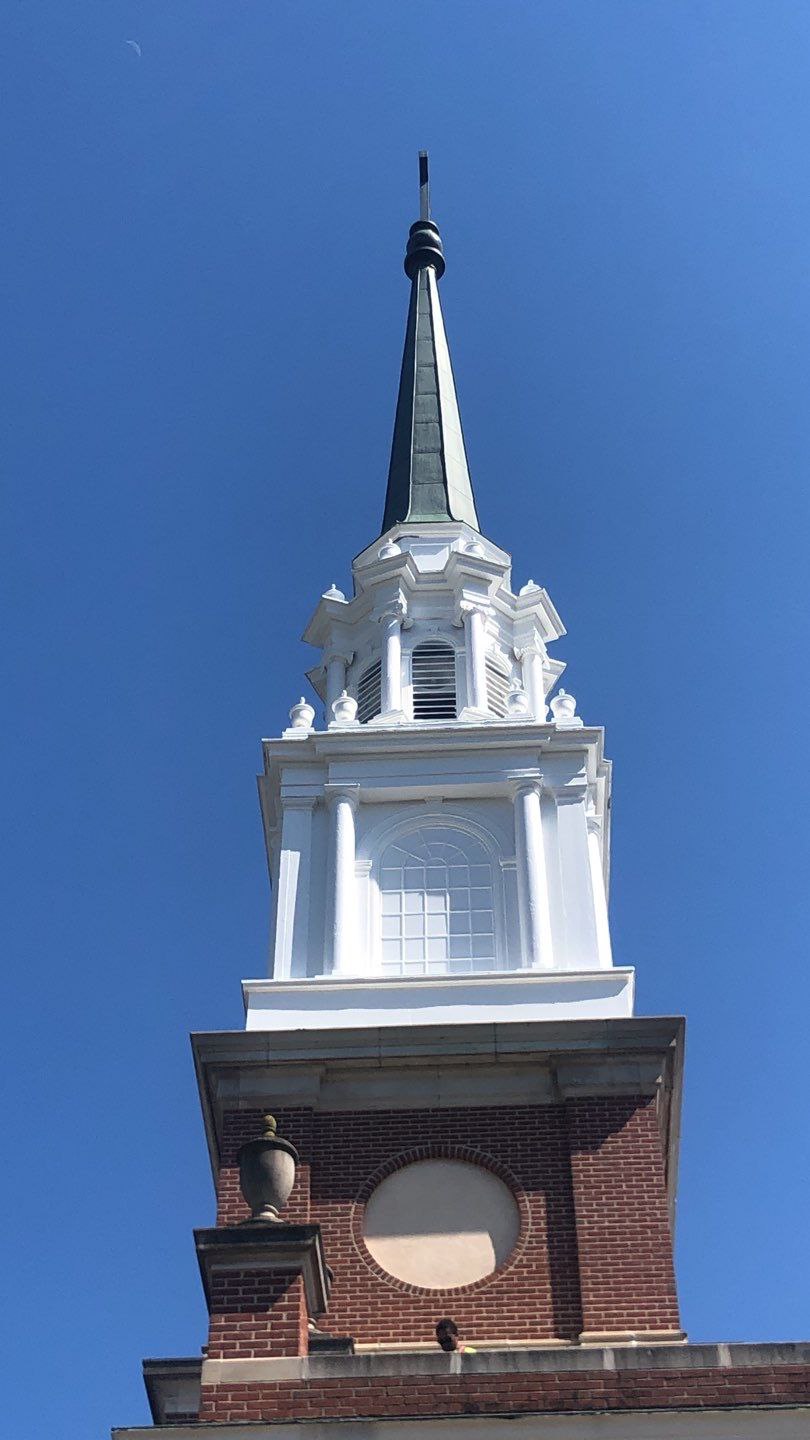posted by Custom Coatings, Inc. on October 15th, 2020
How do I paint a Church Steeple?
All across the United States, church steeples serve as historic landmarks as well as functional community emblems, ringing out the time and calling flocks to worship. They’re a lovely symbol of our freedoms and faith – but their prominence and height also means these structures are constantly exposed to the elements. This means they just need a little love now and then: proper care, maintenance, and regular painting to protect them against all God has wrought with regard to weather.
At Custom Coatings, we’ve pained a lot of steeples in our more than thirty years in business. So, whether you’re thinking of painting one yourself or finding a contractor to do it for you, we’ve got some tips that will help you understand the complexities of the job and get it done right.
Height is one of the biggest considerations.
Steeples tend to be tall, so access is an important element to consider. High lift booms are typically required to hoist workers and equipment to your steeple, but this equipment is extremely heavy and can cause damage to parking lots, curbs, and landscaping. For this reason, make sure you know the location of buried utilities such as septic or below ground tanks before getting started and clear a path for the equipment. It’s extremely important with regard to keeping workers and property safe.
The elements really do a number on our centers of worship.
It’s also important to understand how your steeple is constructed and know how the seasons affect its composition. Older steeples are often made of wood, but most modern ones are constructed of either aluminum or fiberglass. Typically, new steeples also come pre-finished in the church’s color of choice (usually white). After a number of years however, the elements will begin to break down that initial finish, mold and dirt will collect on the surface, and it’s even common to have pre-finished coatings degrade into a chalky residue that tends to leave unsightly streaks on brick and siding below the peak. In addition, sealants used to close joints and edges often crack and become compromised. If left untreated, these issues can lead to much larger problems such as roof leaks and water damage, so you’ll want to assess (and remedy) the condition of your steeple before starting any coating work.
Preparation before painting is key.
This is the same advice we give on every single project: Before applying any paint, it is imperative that every surface is prepared correctly to ensure optimal adhesion and a long lifespan for its new coating. First, the steeple needs to be cleaned. Pressure washing at a range of 3,000 – 4,000 PSI (pounds per square inch) removes surface contaminants well, but in some cases, cleaning agents may be required to remove stubborn areas of dirt or mold. (We always recommend environmentally safe cleaners for outside jobs like this) After washing, your steeple needs to be thoroughly sanded. Sanding will aid in creating a more uniform surface by removing any chipping paint, rust or other contaminants that pressure washing missed. It also slightly abrades the surfaces, which helps the coatings bond better. Finally, a good contractor will also remove all old sealant from joints and edges and replace it with a urethane-based product.
Prime, then paint.
After prepping is complete, you can start layering on the coatings. Your first layer should be a high-quality primer. Don’t skip this step; it’s critical. The primer coat does a number of important things: it seals the open pores of the substrate, protecting the coating system from within; it bonds to glossy surfaces (commonly found on steeples), which increases adhesion of the finish coat; it creates a more uniform surface across the substrate; and finally, it helps to hide blemishes, stains and imperfections. Bonus: most primers can be tinted to the finish color, which also aids in overall color coverage.
Choose your final coat wisely.
After prep, cleaning and priming, you’re finally ready to add a finish coat. In most cases, three coats (one coat of primer and two coats of finish) are sufficient to achieve full coverage. However, in some cases, additional finish coats may be required. The finish coat is the “first line of defense” your steeple has against the sun and other harmful natural elements. Therefore, it is imperative that the correct coating is used. We recommend a high quality, high gloss urethane coating. Why high gloss? Because generally speaking, the higher the sheen, the more protection the coating offers against the elements, especially the sun’s UV rays. Urethane coatings are a perfect choice for the finish coat on steeples because they have excellent abrasion and weather resistant properties.
The dignity of your church’s most visible architectural element is important. Understand the steps and choose either a high-quality contractor to paint your steeple, or follow through on your own, and come this Sunday – and many Sundays into the future – you’ll love the results.




